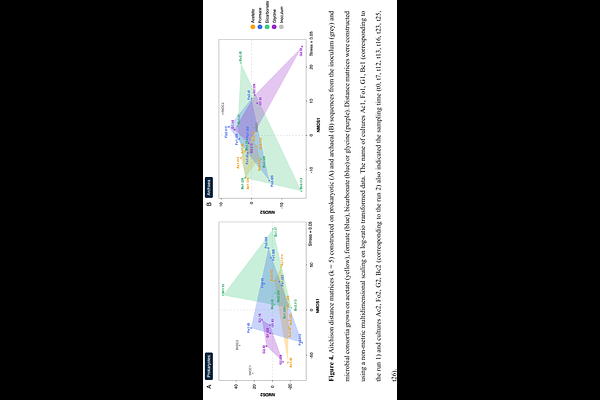Cultivating microbial communities from the serpentinite-hosted Prony Bay Hydrothermal Field on different carbon sources in hydrogen-fed bioreactors

Cultivating microbial communities from the serpentinite-hosted Prony Bay Hydrothermal Field on different carbon sources in hydrogen-fed bioreactors
Popall, R. M.; Roland, A.; Davidson, S.; Combet-Blanc, Y.; Price, R. E.; Postec, A.; Erauso, G.
AbstractThe primary source of carbon is one of the most fundamental questions regarding the development of microbial communities in serpentinite-hosted systems. The hydration of ultramafic rock to serpentinites generates hydrogen and creates hyper-alkaline conditions that deplete the environment of dissolved inorganic carbon. Metagenomic studies suggest that serpentinite-hosted microbial communities depend on the local redissolution of bicarbonate as well as on small organic molecules produced by abiotic reactions associated with serpentinization. To test these hypotheses, microbial consortia collected from the Prony Bay hydrothermal field were grown under anoxic conditions in hydrogen-fed bioreactors using bicarbonate, formate, acetate, or glycine as the sole carbon source. In contrast to glycine, the other three carbon substrates allowed the growth of microbial consortia characterized by significant enrichment of individual taxa. Surprisingly, these taxa were dominated by microbial genera characterized as aerobic rather than anaerobic as expected. We propose that an intricate feedback loop between autotrophic and heterotrophic foundation species facilitates the establishment of serpentinite-hosted shallow subsurface ecosystems. Bicarbonate-fixing Meiothermus and Hydrogenophaga, as well as formate-fixing Meiothermus, Thioalkalimicrobium, and possibly a novel genotype of Roseibaca might produce organic compounds for heterotrophs at the first trophic level. In addition, the base of the trophic network may include heterotrophic Roseibaca, Acetoanaerobium, and Meiothermus species producing CO2 from acetate for a more diverse community of autotrophs. The cultivated archaeal community is expected to recycle CH4 and CO2 between Methanomicrobiales and Methanosarcinales with putative Woesearchaeales symbionts.